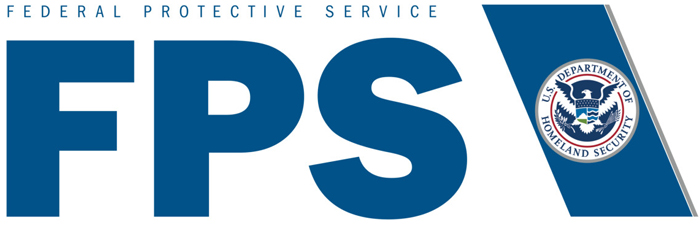
The Department of Homeland Security’s Federal Protective Service (FPS), in partnership with the DHS Interagency Security Committee (ISC) Design-Basis Threat Subcommittee and Argonne National Laboratory (ANL), is pleased to announce its Federal Facility Design-Basis Threat Methodology has been Nominated in the 2023 ‘ASTORS’ Homeland Security Awards Program.
This past year, the Department of Homeland Security Interagency Security Committee (ISC) Design-Basis Threat (DBT) Subcommittee partnered with the Department of Homeland Security’s Federal Protective Service (FPS) and Argonne National Laboratory to develop a technology to modernize the methodology used in the development of the DBT Undesirable Event Ratings.
The ISC defines an undesirable event as an incident directed towards a Federal facility that adversely impacts the facility’s operation, the agency’s mission, or its personnel.
The facility risk assessment must consider several specific potential risks, referred to as undesirable events.
The successful application of scientific knowledge for practical purposes behind this modernization has allowed the ISC to establish better standards used by federal facilities and their tenant agencies to anticipate and respond to threats.
It has enabled the federal community to prioritize better and allocate resources to the most needed areas.
Furthermore, it has allowed for developing more comprehensive and effective threat response strategies using defensible and reproducible results.
Ultimately, the Argonne/FPS/ISC Team’s new methodology has allowed the ISC community to better protect the critical government infrastructure essential to our society’s functioning.
(For more than three decades, Argonne’s Decision & Infrastructure Sciences division researchers have helped understand and analyze U.S. critical infrastructure. This includes electric power plants, power lines, cell phone towers, hospitals, etc. We help ensure the continuity of this infrastructure. They also help many agencies {FEMA, Department of Homeland Security) assess the safety and security of facilities and systems so they can plan for the future. Their expertise and tools help partners prepare, protect, and secure facilities and entire systems against any hazard. Courtesy of Argonne National Laboratory and YouTube.)
WHAT IS THE DESIGN-BASIS THREAT METHODOLOGY AND REPORT
The ISC is a group of 66 federal agencies established by the US government to oversee and coordinate the physical security of federal facilities, the people who work in them, and those who visit.
The ISC was established in the wake of the 1995 Oklahoma City bombing of the Alfred P. Murrah Federal Building. The DBT report is developed and published by a Subcommittee representing 14 federal agencies.
The ISC uses 33 Undesirable Events (UEs) to refer to events that could compromise federal facilities’ security.
The ISC Risk Management Process continuously assesses and publishes updates annually (in a detailed ISC Report comprising the DBT Report and Appendix B: Countermeasures) to ensure that the security measures at federal facilities remain effective against evolving threats, including UEs.
Those updates include reviewing and updating the UE scenarios used in the DBT and determining a score for its baseline threat rating. As part of that update, UEs are reviewed each year to determine their baseline threat on a 5-tiered scale to be used until the next update.
The DBT methodology is a key component of the ISC’s efforts, as it defines a way to rank the specific threat scenarios that federal agencies must be able to defend against.
The DBT rankings and detailed report provide a consistent and standardized basis for security design and implementation, ensuring that federal facilities are protected against the most likely and dangerous threat scenarios.
(Learn more. 20,000. That’s how many calls agents, inspectors, and uniformed officers with the Federal Protective Service respond to each year at facilities nationwide. The training involved in facing these crimes, incidents, and threats is rigorous and appeals to the brave, who took the oath to protect, prevent, and respond. IACP-TV visits the men and women at the FPS. Courtesy of IACP-TV, WebsEdgeSociety and YouTube.)
IMPACT OF THE DESIGN-BASIS THREAT METHODOLOGY
Although the DBT is updated annually, the underlying methodology the committee has used to assign threat ratings to the 33 UEs has remained unchanged for over a decade.
Recognizing a need for change, the ISC partnered with Argonne National Laboratory and FPS to devise a new methodology that better represented the diverse and challenging threat landscape facing the 66 federal agencies that comprise the ISC (21 primary members and 45 associate members).
The successful new technology created by the Argonne/FPS/ISC Team was developed and used in 2022. It is more flexible and adaptive to the needs and concerns of the federal community and more accurately reflects the dynamic nature of evolving threats (both sophisticated and common criminal activity).
The new technology is also more efficient and effective in classifying potential threats with current/modern data tools/techniques. It accomplishes this by leveraging the latest threat intelligence, data analytics, and predictive modeling tools.
Moreover, it better positions federal agencies to address potential facilities, personnel, and information threats.
WHAT CHANGES DOES THE DESIGN-BASIS THREAT METHODOLOGY DELIVER
Argonne and FPS began by reverse engineering the previous methodology, which focused on a two-objective model (capability and intent).

Argonne and FPS proposed that a three-objective model, including capability, history, and intentions, would capture federal facilities’ possible threats more effectively.
Capability was defined as complexity, availability, and planning. History was determined to be both existence and trend. The team defined intentions with economic/operational impact, facility impact, loss of life, and societal/psychological impact.
The ISC/Argonne/FPS Team then worked with the DBT Methodology Focus Group (a subgroup of subcommittee subject matter experts) to elicit value model specifics (levels/labels and importance) and objective weights.
The team conducted several lengthy online sessions to complete over 50 value and objective elicitations. The mean standard deviation for all elicitations was low (reflecting a narrow distribution of deviations), and the mean confidence (on a scale of zero to four) was greater than three.
Restated, the DBT Methodology Working Group typically had low disagreement (measured by proxy from standard deviation) and high confidence (as measured by self-surveyed responses conducted simultaneously to the standard elicitation).
To represent individual UE scores, the analysis utilized the threat, identification, determination, evaluation (TIDE) clustering algorithm.
TIDE is a deterministic K-means clustering algorithm where the number of clusters, or “k,” represents the five rating groups mentioned in this section (minimum to very high).
Rather than use a stochastic method with a controlled random seed, TIDE initializes the algorithm with fixed start points based on the distribution of the dataset, an effective method because the algorithm focuses on single-dimensional data.
The algorithm calculates the distance of each point in the dataset to the start points and assigns each point to its closest start point, thus creating five groups.
Next, the algorithm measures the distance of each point to the average of each of the five groups—rather than the original start points—and re-assigns points to the groups’ new centers. This cycle repeats until each point remains in its group for more than one cycle.
The result approximates the optimal condition that minimizes the distances from individual UE scores to the group’s mean and maximizes the distance between groups of individual scores.
With a model established, the survey was distributed to subject matter experts (SMEs), and responses were aggregated. The results were presented and discussed, and team members were allowed to fine-tune their scores.
The SMEs’ final scores were compiled, and the final UE scores were then grouped with a deterministic style k-means clustering function, which was previously used. This process approximates an optimal solution, maximizing the distance between cluster means and minimizing the sum of the distances from each UE to its respective cluster center.
(See a snapshot of how Federal Protective Service carries out its mission to protect federal buildings, federal employees and contractors, and visitors to federal facilities. The FPS provides integrated security and law enforcement services to more than 9,500 federal facilities nationwide. These services include conducting facility security assessments, responding to crimes and other incidents to protect life and property, and detecting, investigating, and mitigating threats. Courtesy of IACP-TV, WebsEdgeSociety and YouTube.)
WHO WILL BENEFIT FROM THE DESIGN-BASIS THREAT METHODOLOGY
Each year, 66 federal agencies from across the federal landscape utilize the DBT Methodology and subsequent Reports to more efficiently and effectively anticipate and respond to potential threats.
This translates into thousands of federal facilities and millions of men and women who visit/work in those facilities each year.
Threats are always evolving and becoming more sophisticated, so it is essential for agencies to continuously assess their security needs and incorporate new technologies and practices to stay ahead of evolving threats.
The new technology created by the ISC/Argonne/FPS Team enables federal agencies to take a holistic approach to security to protect their facilities, personnel, and assets against a wide range of threats.
 Because of the modernization of the DBT methodology, federal agencies are now better positioned to determine the security measures necessary to protect against likely threats.
Because of the modernization of the DBT methodology, federal agencies are now better positioned to determine the security measures necessary to protect against likely threats.
This translates into cost savings in acquiring new physical security designs for a facility and in terms of the personnel security procedures, policies, and other protective measures that must be implemented.
Finally, the new technology enables security personnel to guide their agency on how to respond to security incidents and better recover from them.
FPS & ANL Recognized in 2022 ‘ASTORS’ Homeland Security Awards Program

American Security, Today’s Annual ‘ASTORS’ Awards, is the preeminent U.S. Homeland Security Awards Program, and now in its Eighth Year, continues to recognize industry leaders of Physical and Border Security, Cybersecurity, Emergency Preparedness – Management and Response, Law Enforcement, First Responders, as well as federal, state and municipal government agencies in the acknowledgment of their outstanding efforts to Keep our Nation Secure.
DHS Federal Protective Service (FPS), in Collaboration with Argonne National Laboratory (ANL)
 Excellence in Public Safety
Excellence in Public Safety
-
Triage and Investigation for Expediated Response (TIER) Tool
-
Identifying precursors that will assist in identifying individuals who may be a threat to protected persons and facilities has long been a focus of law enforcement and security personnel.
-
Agencies can become overwhelmed with threats (via email, voice, mail) and other inappropriate communications, in a tidal wave of rhetoric, making it difficult to prioritize responsive action.
-
Underscoring this trend, there were 692 mass shootings reported in the United States in 2021, and as of June 2022, there were 293 such events. The ability to quickly analyze and react to threatening emails, voice messages, and mail messages when the sheer number received is overwhelming would provide a powerful tool to law enforcement.
-
Understanding this challenge, the DHS Federal Protective Service has partnered with the Department of Energy’s Argonne National Laboratory to determine if it is possible to use machine learning approaches to develop a solution for automated threat prioritization.
-
The result of this research is the creation of the Triage and Investigation for Expediated Response (TIER) tool, which uses a machine learning approach to identify potential subjects of concern based on semantic cues uncovered from the analysis of communication transcripts.
-
The aim of TIER is to identify warning behaviors and to flag communications received by the Federal Government through official government email, government phone systems, or official mail. Moreover, TIER is solely focused on the rhetoric/communicated language received by FPS and excludes biographical or personal information related to the person communicating the message, which helps avoid concerns related to bias, targeting, or profiling.
-
*FPS and ANL have now been recognized for their Fifth Consecutive Year in the Annual ‘ASTORS’ Homeland Security Awards Program






























